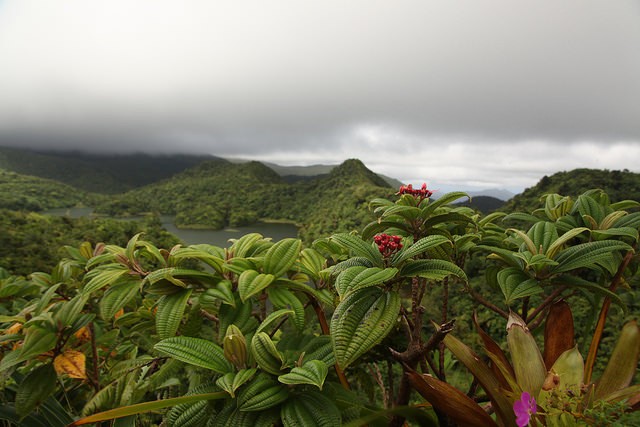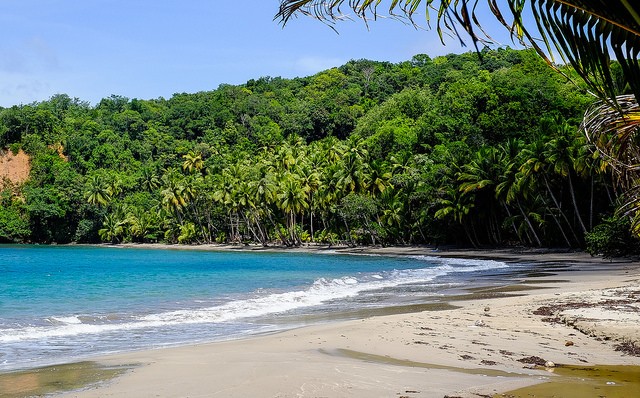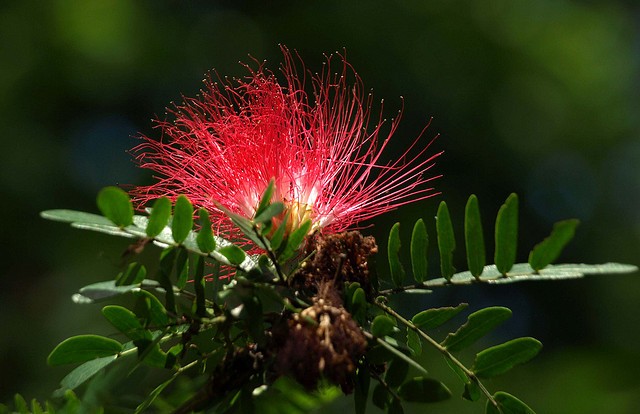 the Travel Enthusiast
the Travel Enthusiast
- 26 May
Adam in Amazing Places | NO COMMENTSDominica, The Nature Isle
Dominica is an island nation situated on the Caribbean. It lies between Guadeloupe and Martinique.
The capital and largest city is Roseau. The currency is the East Caribbean Dollar. The entire area is 750 sq km while the coastline is 148 km. It is a member of the Commonwealth of Nations and The Association of the Caribbean States.
The political status of the country is republic.
The population of Dominica is around 72.000 and 67% of them live in urban areas. African and European descent fill mostly the population but there are also small minorities of Syrians and Caribs.
English is the official language of the country but French based creole is also widely spoken throughout the country. Both a former French and British colony, the citizens are equally fluent in both languages.
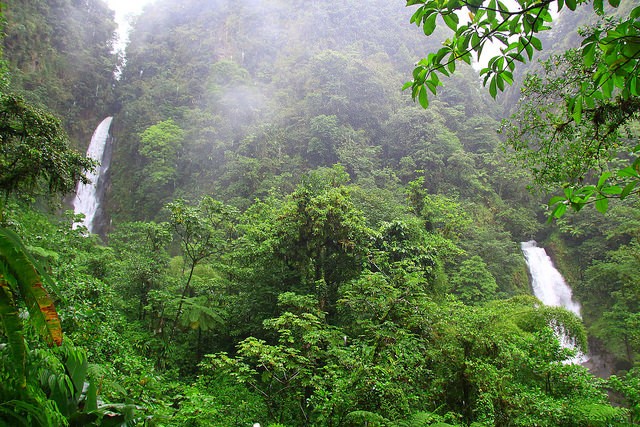
The Trafalgar falls inside the Morne Trois Piton National park, one of the best natural parks and a typical Dominican view ©Jay Sam/flickr
The Dominican people are mainly Christians. Freedom of religion is granted and well respected by the government.
The economy of the country is always vulnerable because of natural issues that the country usually faces. Tropical storms and hurricanes causes severe damages for the crops and is also very dependent on exporting bananas to other continents(especially Europe). Despite that, the country introduced measures since the 1980’s shaped the economy. It started cropping melons, pineapples, citrus, mangoes instead of sugar, cocoa and coffee and exports small industries like electronic assembly. They also started encouraging tourism and eco-tourism.
Dominica is a beautiful Caribbean island renowned for its vast flora and is one of the greenest island on the region. It also offers you one of the most intriguing natural landscapes in the world. Some examples of the landscapes are:
- Morne Trois Pitons National Park
- Cabrits National Park
- Layou River
The infrastructure and transportation of the country is good. It has about 1,510 km of roads and around 60% of them are paved. The roads are around the island rather than inside the island due to its vast volcanic and mountainous areas. Like most former British colonies, the traffic is on the left side. The international airport of Dominica is Melvine Hall, 65 km of Dominica. Roseau port is the only major port of the country and major ferries and cruise ships can be taken from there.
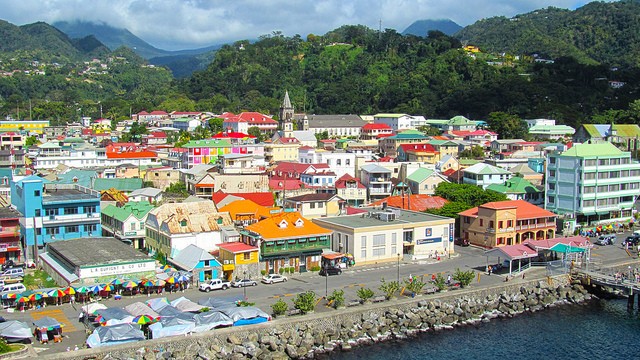
Roseau, the capital of Dominica seen from above, surrounded by its trademark nature ©Mike LaMonaca/flickr
Although it has a good health care system, the infant mortality rate is relatively high compared to other Caribbean nations, being 12 per 1.000 live births. The life expectancy is 76. Hospitals and clinics are widespread on the island.
The immigration and customs are quite strict and many imports such as fruits and products like bananas, mango, coconuts, avocados, coffee and some animal products are not allowed. Only few countries require a Visa to enter the country.
- Flights
- Hotels
- Packages
- Cars
- Cruises
travel search by Travelgrove (get this widget)Dominica is volcanic and mountainous island. The center is a mountain ridge that runs from Cape Melville that lies in the north to the south. There are numerous rivers and mountain streams. The topography is one of the most picturesque and outstandingly beautiful in the world, wooded mountains along with waterfalls covering almost the entire country. Most beaches have black volcanic sands.
The climate is subtropical and known for being very hot all year round. Heavy rainfalls are very common, especially in the mountainous areas.
Dominica is especially famous for its vegetation. It has the nickname “The Nature Isle”. It has the most natural landscapes on the Caribbean. Dense forests and woodlands cover around 60% of the island. The valleys have subtropical vegetation and orchids.
Bird species are common on the island and the best examples of native birds is the Sisserou or also known as the Dominican Parrot.
The Brief History of Dominica
Dominica, having an exceptionally fertile land has always attracted both settlers and colonizers throughout the centuries. It was used as a military base and European powers fought each other to seize the island. The time when Christopher Columbus visited the island in 1493, it was a stronghold used by the Caribs to drive out the Arawak’s.
From that moment on, there was a constant rivalry between France and Great Britain, particularly in the 17th century. They both controlled the island and the French also brought enslaved Africans with them. By the 18th century the island was in possession of France in 1778 but was immediately seized by Great Britain in 1783. The French tried to invade the island two times but both times it withdrawn and it was finally a British colony in 1805.
During the 19th and early 20th century, the island was linked to Antigua, being part of the Leeward islands and later it became part of the Federation of the Leeward Islands Colony.
In the 1960’s while the United Kingdom was still responsible for its foreign policy and defense, it started gaining more independence. Edward LeBlanc became the Chief Minister in 1961. He was responsible for Dominica being part of the West Indies Associated States. It also achieved full internal self- government. After Leblanc’s retirement, Patrick John succeeded his place. After the elections of 1975 that Patrick John had one, he’s sole purpose was to gain total independence from the United Kingdom.
It was the year of 1978 when Dominica finally achieved total independence from the UK as a republic, and joined the Commonwealth of Nations. It took the name as Commonwealth of Dominica. John became the first prime minister of the country.
Dominica faced many tragedies throughout the centuries, from natural disasters to historical events. Despite that, the country has become one of the most exciting and intriguing destinations in the world. It’s a popular tourist destination filled with lots of activities, and it is an ideal destination for mountain climbers, hikers and nature lovers.
You might also like
